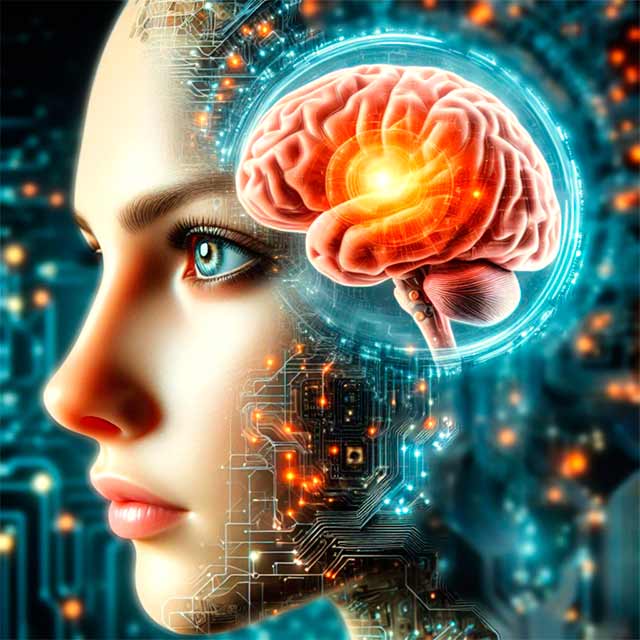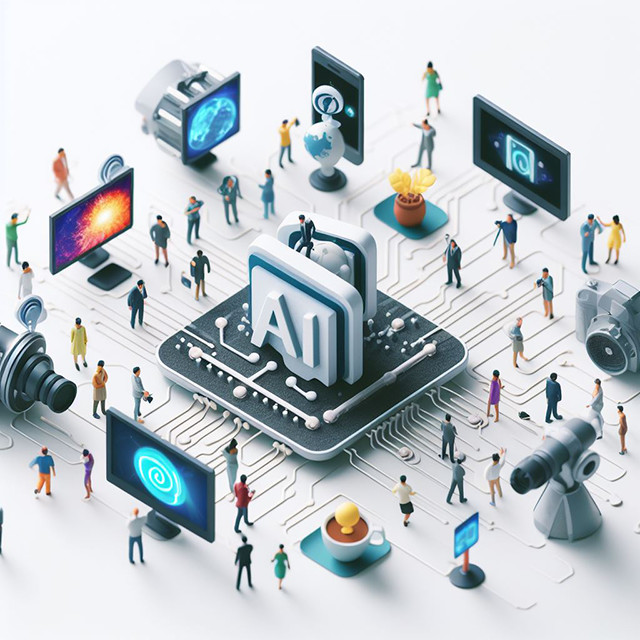Augmented Intelligence: A Giant Leap Towards Human-Machine Harmony
Augmented Intelligence: A Giant Leap Towards Human-Machine Harmony
Artificial intelligence (AI) stands at the precipice of a transformative shift, moving beyond the aspiration of autonomous intelligence to embrace a collaborative paradigm known as augmented intelligence (AI). This groundbreaking approach eschews the notion of AI replacing human capabilities, instead recognizing the inherent strengths of both humans and machines and harnessing them together to achieve extraordinary outcomes.
Capturing the Essence of Augmented Intelligence
Augmented intelligence is not merely a technological advancement; it represents a fundamental shift in our conceptualization of AI's role in society. It advocates for a harmonious partnership between humans and machines, where AI serves as an invaluable tool to augment and amplify human capabilities, enabling us to achieve feats that were once unimaginable.
At the heart of augmented intelligence lies the recognition that humans and machines possess distinct strengths. Humans excel in cognitive flexibility, adaptability, and ethical discernment, while AI boasts immense computational power, pattern recognition abilities, and the ability to process vast amounts of data. When these strengths are seamlessly integrated, a synergistic effect emerges, unlocking new frontiers of human potential.
Humans: The Guiding Lighthouse in the AI Landscape
In this collaborative framework, humans take the mantle of the guiding force, providing context, expertise, and ethical guidance to steer AI's decision-making processes. Humans ground AI's actions in human values, ensuring that AI's capabilities are employed for the betterment of society.
Humans' cognitive abilities enable them to grasp complex situations, identify subtle nuances, and make informed judgments. They possess the ability to adapt to changing circumstances, learn from experiences, and make creative leaps that defy algorithmic predictability. These qualities serve as the bedrock upon which augmented intelligence thrives.
AI: The Tireless Assistant and Pattern Recognition Wizard
AI, on the other hand, acts as an indispensable assistant, meticulously analyzing data, identifying patterns, and automating tasks. AI's computational power enables it to process vast amounts of information with unprecedented speed and accuracy, providing humans with real-time insights and actionable recommendations.
AI's ability to learn from data and adapt to new situations is a testament to its remarkable potential. It can continuously refine its algorithms, improving its performance and extending its capabilities in ways that were once unimaginable.
A Passionate Dance for Unprecedented Feats
When humans and AI collaborate effectively, a powerful dance emerges, where each partner complements and enhances the other's strengths. Humans provide the strategic thinking, creative problem-solving, and ethical discernment, while AI handles the complexities of data analysis, task automation, and routine operations.
This harmonious coexistence liberates humans from the mundane tasks that often consume time and energy, allowing them to focus on higher-order cognitive activities that drive innovation, enhance creativity, and foster human connection. Of course, taking for granted that humans are not downgraded but other humans that are in control of the power of AI or by unforseen results of a bad and unethical implementation of AI.
Unleashing the Power of Augmented Intelligence: A Glimpse into the Future
The implications of augmented intelligence are far-reaching, transcending the realm of technology and shaping the future of society as a whole. It holds the potential to revolutionize industries, bridge the digital divide, democratize access to knowledge and healthcare, and empower individuals to reach their full potential.
In healthcare, AI is revolutionizing diagnostics, providing early detection of diseases and personalized treatment plans. This translates into improved patient outcomes, enhanced healthcare delivery, and a reduction in healthcare costs.
In education, AI-powered adaptive learning platforms are tailoring educational experiences to individual needs, providing personalized guidance and real-time feedback. This optimizes learning outcomes, enhances student engagement, and prepares a more skilled and knowledgeable workforce.
In manufacturing, AI-driven automation is streamlining production processes, reducing errors, and minimizing downtime. This leads to increased efficiency, improved quality control, and cost savings, paving the way for a more competitive and innovative manufacturing sector.
In finance, AI is enhancing risk management, fraud detection, and investment strategies. This enables more informed financial decisions, minimizing financial losses and optimizing investment portfolios.
In customer service, AI is personalizing customer experiences, providing targeted recommendations, and resolving issues more efficiently. This leads to enhanced customer satisfaction, increased sales, and a more loyal customer base.
Ensuring the Responsible Path Forward
As augmented intelligence continues to evolve, its transformative impact will extend far beyond the realm of technology, shaping the future of society as a whole. It holds the potential to democratize access to education and healthcare, bridge the digital divide, and empower individuals to reach their full potential.
In this new era of human-AI collaboration, augmented intelligence will not replace human ingenuity; instead, it will amplify and elevate human capabilities, enabling us to achieve extraordinary advancements in science, healthcare, education, and beyond.
The future is not about human vs. AI; it's about human-AI cooperation, where our combined strengths propel us towards a brighter, more prosperous future. At least, this is the desirable thing to happen! Augmented intelligence represents the dawn of this new era, where humans and machines collaborate to create a world of endless possibilities.
The Path to Responsible Augmented Intelligence: Navigating the Ethical Landscape
As augmented intelligence continues to unfold, it is crucial to establish ethical guidelines that ensure its development and deployment align with human values and societal well-being. This necessitates a comprehensive approach that encompasses various dimensions, including:
- Transparency and Explainability: AI systems should be transparent in their decision-making processes, allowing humans to understand the rationale behind their outcomes. Explainable AI (XAI) techniques can play a pivotal role in this endeavor.
- Fairness and Non-Discrimination: AI systems should not perpetuate or amplify existing biases and prejudices. Algorithmic fairness principles and rigorous data collection and curation practices are essential to mitigate discriminatory outcomes.
- Human Control and Oversight: Humans should maintain ultimate control over AI systems, ensuring that they are not used for harmful or unethical purposes. Robust governance frameworks and ethical training for AI practitioners are crucial to safeguard human autonomy.
- Safety and Reliability: AI systems must undergo rigorous testing and validation to ensure their safety and reliability in real-world applications. Proactive risk mitigation strategies and robust safety nets are essential to prevent potential harm.
- Privacy and Data Protection: The handling of personal data in AI systems must adhere to stringent privacy and data protection regulations. Clear data governance practices and informed user consent are paramount to protect individual privacy and autonomy.
- Accountability and Responsibility: Clear accountability mechanisms must be established to identify and address any ethical or legal transgressions arising from AI systems. Responsibility for AI development, deployment, and outcomes should be clearly defined.
- Public Engagement and Dialogue: Open and transparent public dialogue is essential to foster trust and understanding of AI's role in society. Engaging with stakeholders, including experts, policymakers, and the public, can inform responsible AI development and deployment.
By embracing these ethical principles, we can harness the power of augmented intelligence responsibly, ensuring that it serves as a force for good, amplifying human capabilities and shaping a brighter future for all.
Augmented intelligence represents a pivotal turning point in human-machine collaboration. It offers the tantalizing prospect of amplifying human potential, transforming industries, and enhancing the lives of individuals worldwide. However, this transformative power must be wielded responsibly, guided by ethical principles and human oversight.
As we embark on this exciting journey, let us embrace the synergy between human ingenuity and AI's computational prowess to create a world of endless possibilities, where humans and machines work on guaranteeing a better society and creating knowledge. Let's hope that this goal is achieved with more success than with that of preventing climate change. With a little luck, this association could help a lot!



Comments
Post a Comment